By Resa Nelson
For the past several years, three Hollywood studios waged war over the right to make a new movie about the Battle of Thermopylae (480 bc), in which a few hundred Spartans kept an enormous invading Persian army at bay for three days. Universal considered a film called Gates of Fire that would have starred George Clooney (Syriana), but eventually gave up. Twentieth Century Fox wanted to remake its 1960s film, The 300 Spartans, but also lost heart. When the fighting ended and the dust cleared, Warner Brothers emerged as the victor. Its version, called 300, opens in theaters on March 9.
The last thing Warner Brothers wanted to make was a run-of-the-mill sword-and-sandals movie. 300 is based on the graphic novel by Frank Miller (Sin City). The filmmakers’ goal was to translate the graphic novel, panel by panel, to live-action film. “We’ve made the choice to be very operatic about this,” says production designer Jim Bissell (Good Night and Good Luck, My Fellow Americans). “We’re not using this as a jump-off point to tell the historical version of the 300—we’re telling Frank’s version. It’s about a very violent culture that had its plusses and minuses: the heroism, the integrity, and the virtues they espoused, but also the fact that throughout their entire lives, they trained to kill. It is material that lends itself to a very theatrical treatment.”
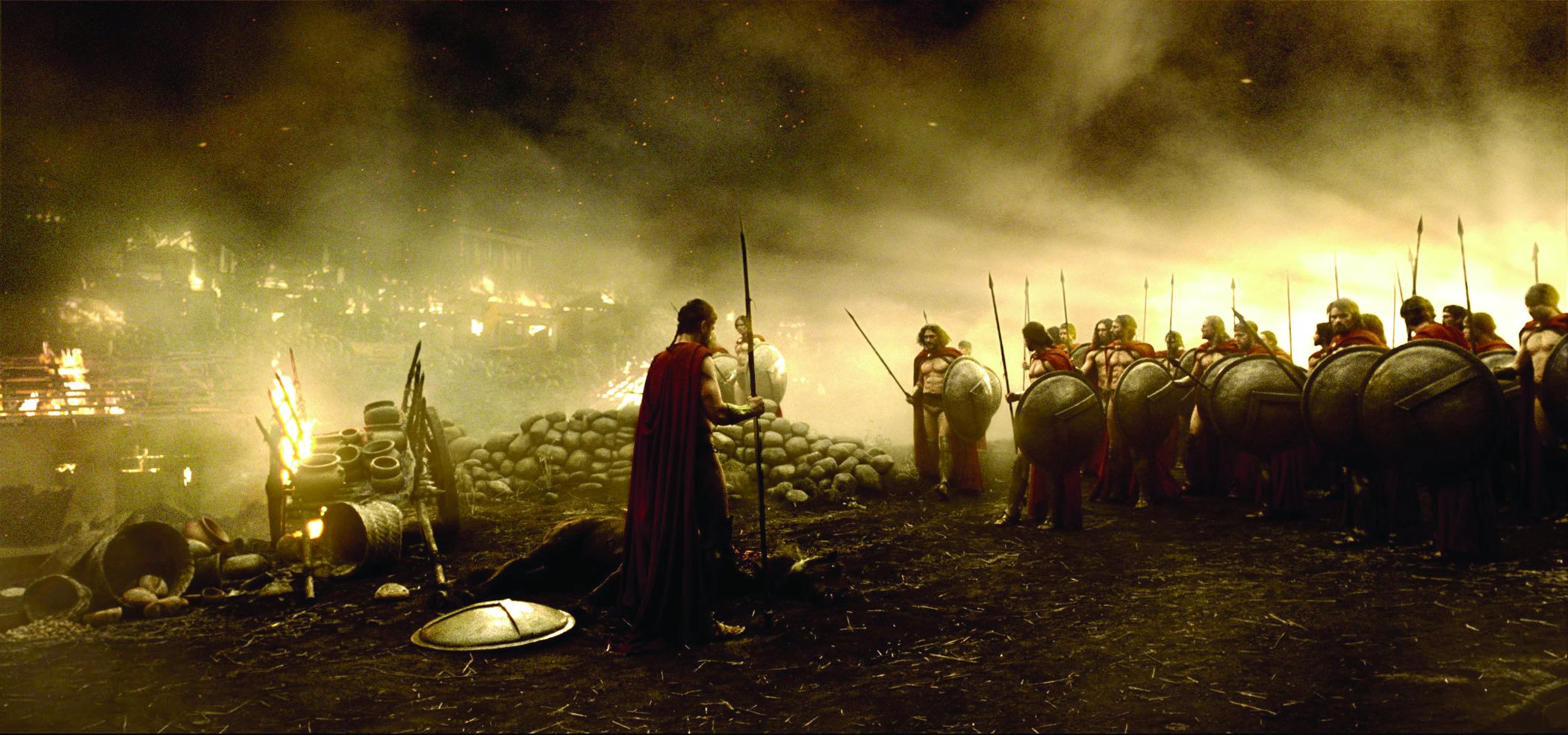
The filmmakers added an element of fantasy. The movie is narrated by Dilios, the sole Spartan survivor, who leaves the battle to spread the story of the 300 Spartans. Dilios is a natural storyteller who believes the truth should never get in the way of a good story. Sometimes his exaggerations cross the line from reality into the realm of Greek mythology.
The fantasy narration is important to director Zack Snyder (Dawn of the Dead), a relatively new director with a passion for Miller’s novel. A fan of both history and legend, Snyder’s goal was to explore the battle from the perspective of a storyteller, not a historian. Snyder hopes this approach will capture the rawness of the energy and emotion of the battle. One of the first obstacles Snyder faced was how to recreate the ancient world. “Using giant sets with big painted backdrops was my original way of conceiving it,” Snyder says. “But that got out of control and, really, it’s not practical.” Most epics that can afford to film on location have a budget in the $100 million range (300’s budget is rumored to be less than a third of that), so Snyder’s options were limited.
The solution was to go indoors, build a large desert terrain, and surround it on all four sides with 30-foot-high blue-screen walls. Thanks to the terrain’s design, it looks like different locations when shot from different angles. “We created less of a naturalistic feel because we were going for a far more stylized look,” Bissell says, “but we didn’t want it to look like a cheap episode of Star Trek either.”
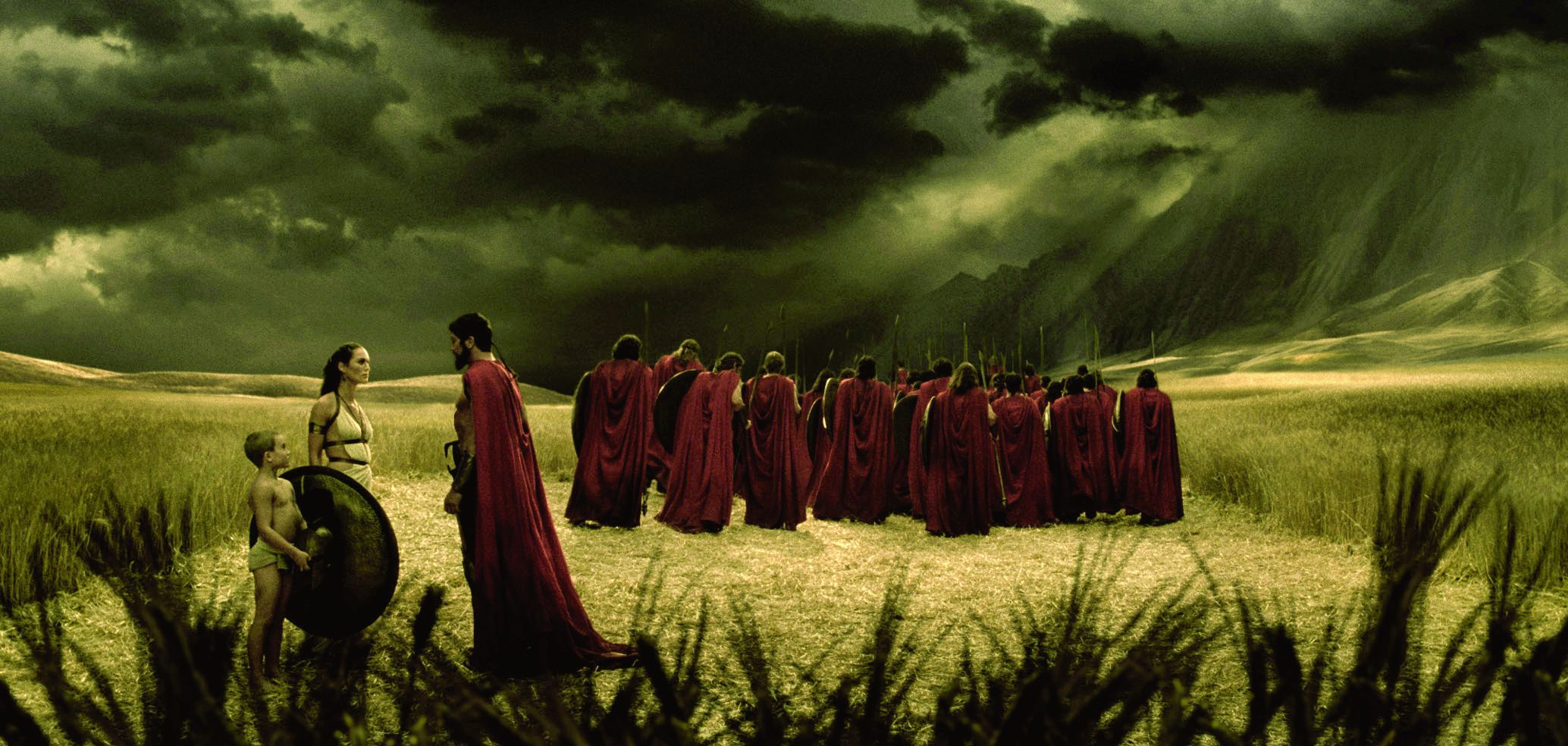
From the ground up, the rest of the landscape was filled in later by using computer graphics (CG). “This is a stand-alone, evolutionary way to approach making a movie of this kind. It’s the first time a real epic has been done this way. Zack is like an architect who’s built all those pieces—the landscape, the drama, the storytelling, and the style—in order to have the building come alive. All the themes are historically accurate: freedom, sacrifice, nobility, heroism, romance, democracy. In the times we live in, you can’t get enough heroes. Troy, Kingdom of Heaven, and Alexander—each was made the traditional way, for better or worse. They were old-fashioned, and we refer to this as ‘new-fashioned.’ It’s like a sword-and-sandals movie without the sandals.”
One of the ways in which 300 strives to be historically accurate is in its goal to replicate the sense and sensibilities of the Spartans. “All they did was train for war,” says screenwriter Kurt Johnstad. “The Athenians recorded the history, but the Spartans had no pottery, no writers, didn’t believe in the arts at all. They were soldiers and warriors before anything else. They believed in their family and their city, and that was pretty much it.”
The actors and stuntmen enrolled in a “school of pain” created specially for them by trainer Mark Twight, a former professional climber known for training soldiers, athletes, and firefighters. Snyder was already familiar with the by-invitation-only gym Twight runs in Salt Lake City. “Zack had seen what happened to people who train there,” Twight says. “His request was, ‘I want to have a training program for all of these guys, something that we can put together that will make them into a team, that will translate on the screen so that it will really look like they’ve been working together and suffering together and living together all of their lives. And that should show through in the way that they fight and the way they are around each other.’”
Twight trained 30 actors and stuntmen for about two months before they appeared on film and then continued to work with them on set. Budget restrictions meant hiring a small cast. However, thanks to technology, a few dozen soldiers could be expanded into an army. The 30 men portrayed both Spartans and Persians. When a scene needed a lot of Spartans, all 30 men put on Spartan costumes. When there was a battle scene, 15 men dressed as Spartans and the other 15 dressed as Persians. Using CG to copy actors and their actions, the scene was then enhanced to make it seem as though thousands of soldiers were taking part.
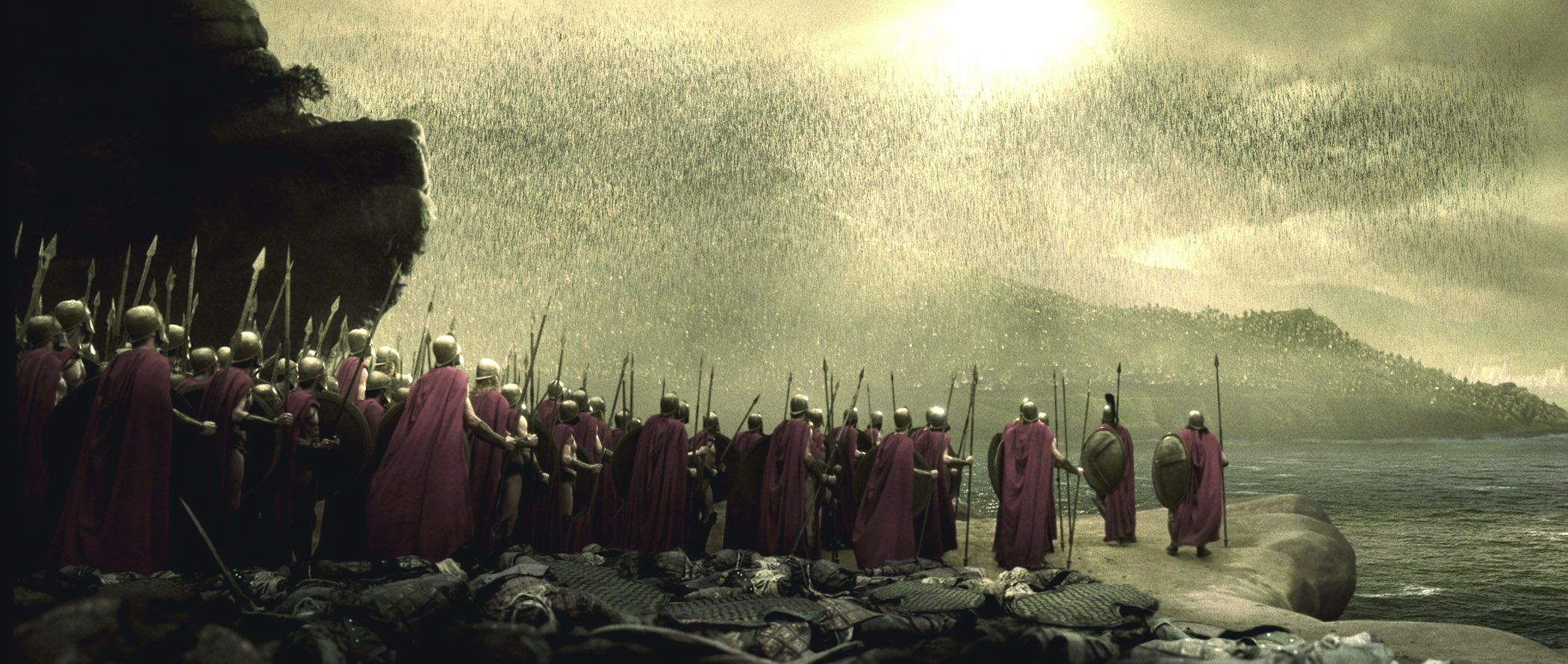
Snyder asked Twight to give his men the physique of an ancient warrior, based on the principle of the survival of the fittest. “You see these big, enormous people in all the movies,” Twight says, “which is distinctly a part of modern society. Were the bodies that we were able to shape for this movie realistic to the era? Yeah, closer than your Schwartzenegger type would be, because there was probably not enough food to eat [in 480 bc]. And certainly if you’re carrying all of your food to go someplace or you’re getting it from the land as you move along, there’s not enough. If you’re hiking all day, moving all day under your own power, the size is always going to be dependent on eating more calories than are necessary to fuel the activity that you’re doing.”
“Even though this is a story about Spartans wedged into a chasm who defend what is basically the doorway to southern Greece, Frank didn’t put all the battles there,” Bissell says about the graphic novel. “He put the battles on the coastal road, which opened it up and made it much more graphic with the crashing waves and the cliffs and the silhouettes of bodies falling off. He also had a coastal road that is an alternate way to get into southern Greece, and that’s where the Spartans reinforce the Phocian Wall and force the Persians into the Hot Gates.
“That’s fine, but we still have to get an idea of this mass of Persians coming at us. So I created a peninsula so the Spartans could see all these Persians come roaring across and merge onto the coastal roads and into the battle arena, which gives us the opportunity to have these fabulous fight scenes without really having to be confined by the road or the Hot Gates. When the Persians retreat, the Persian archers are poised all along this peninsula. They send a barrage of arrows that blocks the sun and you see a huge shadow come across the ocean right toward the Spartans, creating a wheatfield of arrows.”
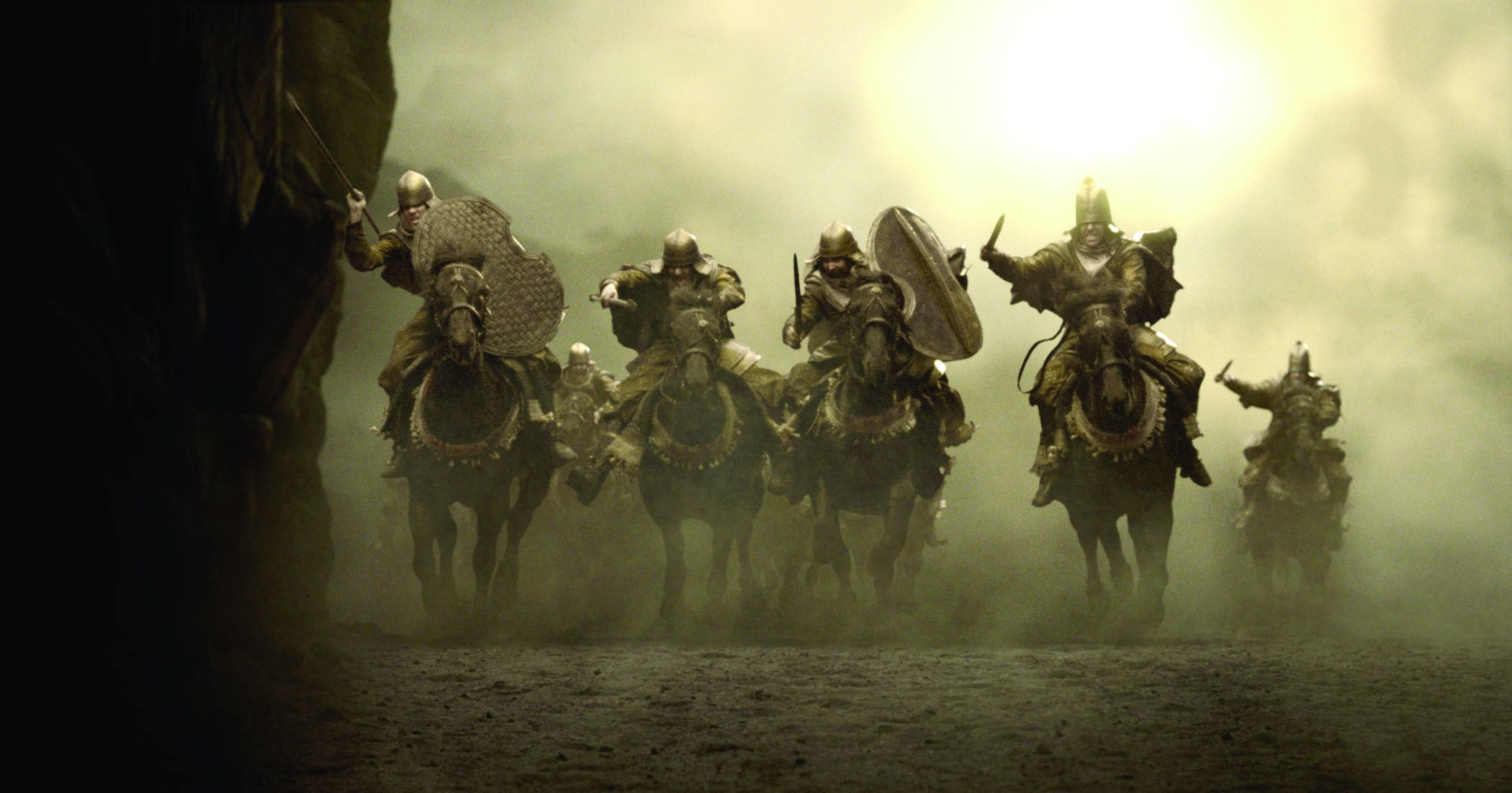
Stunt coordinator Damon Caro (Fight Club, Mr. and Mrs. Smith) designed a range of short fight sequences and taught them to the actors and stuntmen. Every fight sequence was choreographed, and battles were made up of many sequences, like pieces of a jigsaw puzzle. The idea was to mix and match the sequences during filming. “These guys are dedicated and talented,” Caro says, “and that’s half the battle right there. The other thing is memory—the ability to remember the choreography. This is one of those films where you can believe the actors when they say, ‘I did almost all my own stunt work.’”
The fight choreography was intense, and no one walked away unscathed. Gerard Butler , who plays King Leonidas, pulled a hip flexor, developed tendonitis in his shoulders from pushing himself too hard during training, was whacked in the head three times by swords, and suffered a hand injury while trying to spear a fellow actor. Two stuntmen had to be carted off on stretchers.
Ironically, there was no fake blood on set, despite the fact that 300 promises to earn an R rating for its graphic violence. All the blood and guts are CG. “Zack will decide how much to dial it up or down,” Canton says about the level of violence. “We can always adjust it. You hit the button and everything implodes. There’s no blood on the stage at all.” The movie is a different matter, befitting one of the bloodiest and most decisive battles in history—a defeat that became, through repeated retellings, both a victory and a legend.
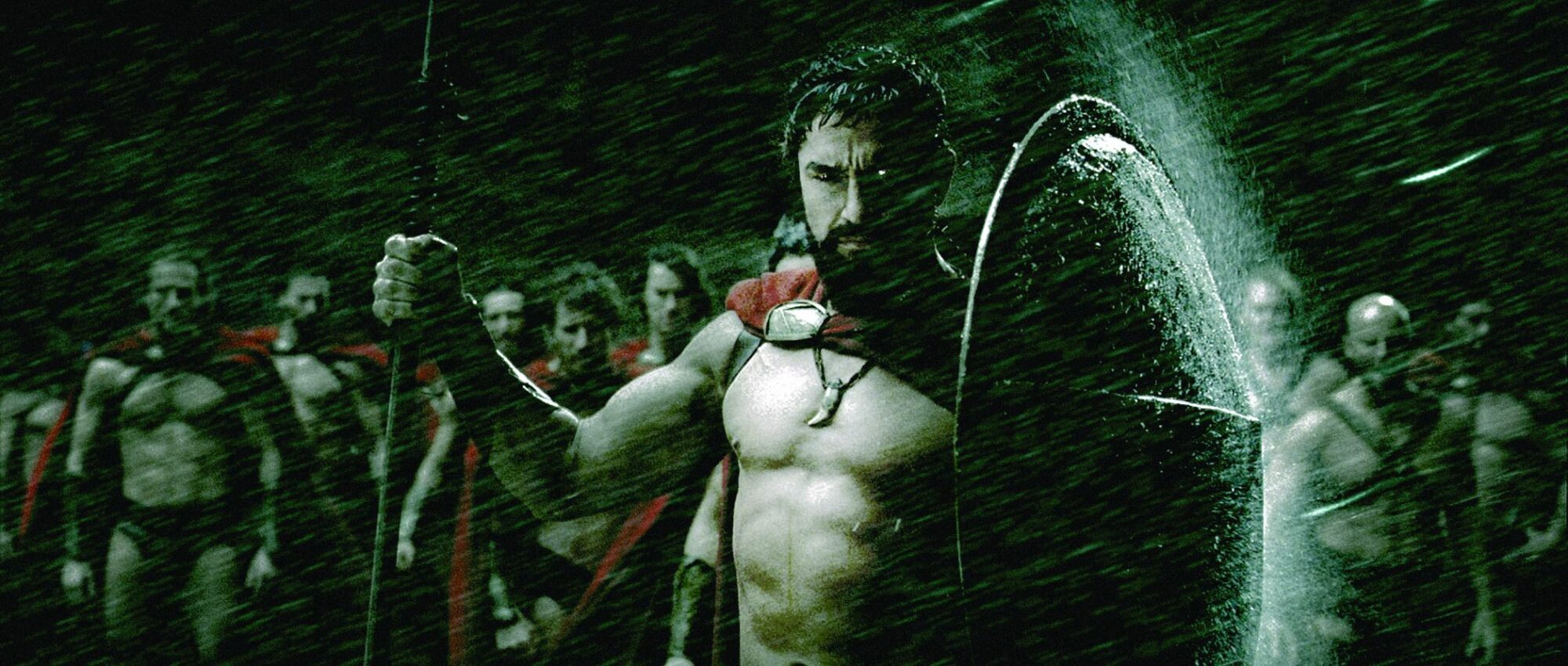
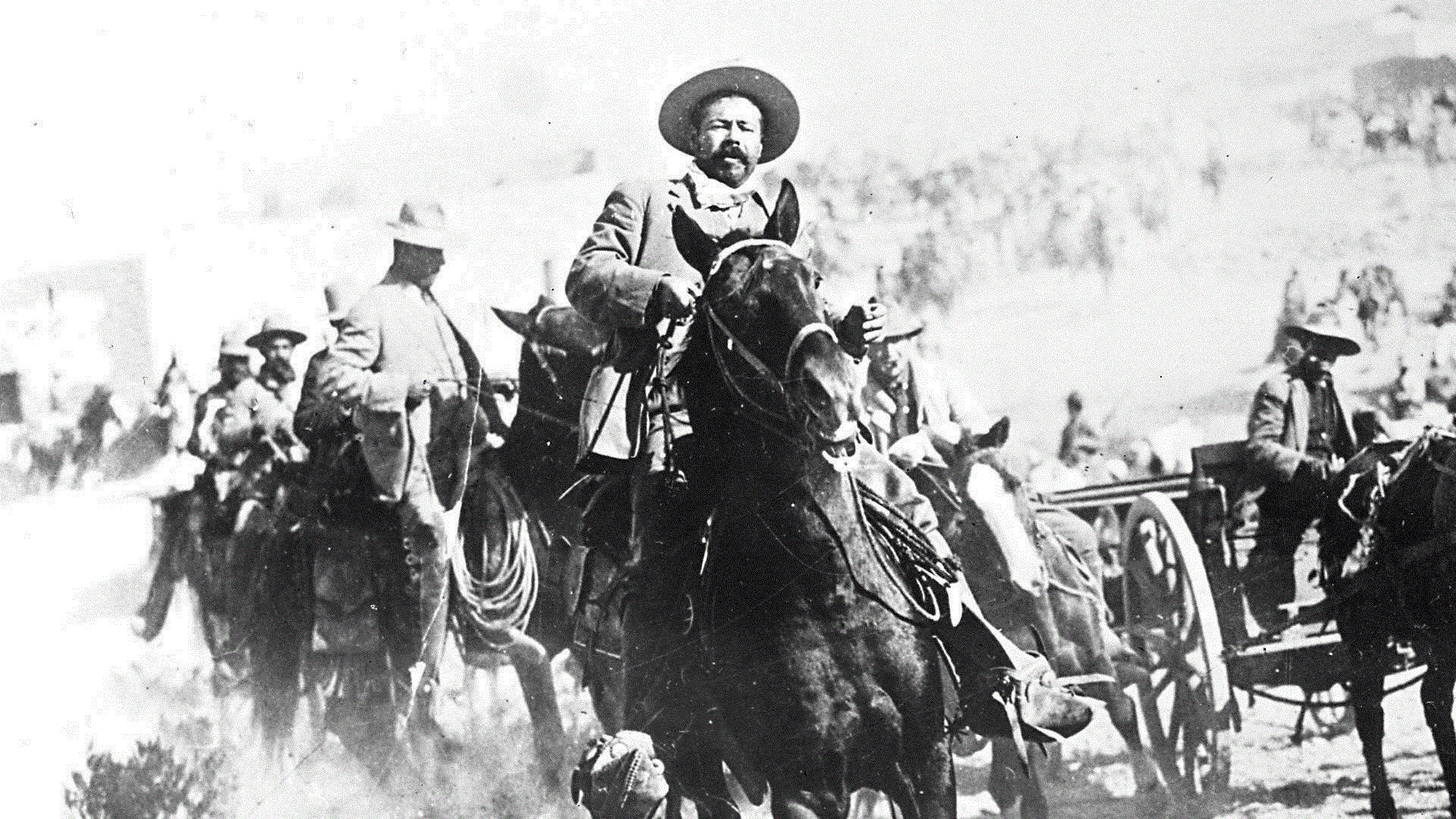

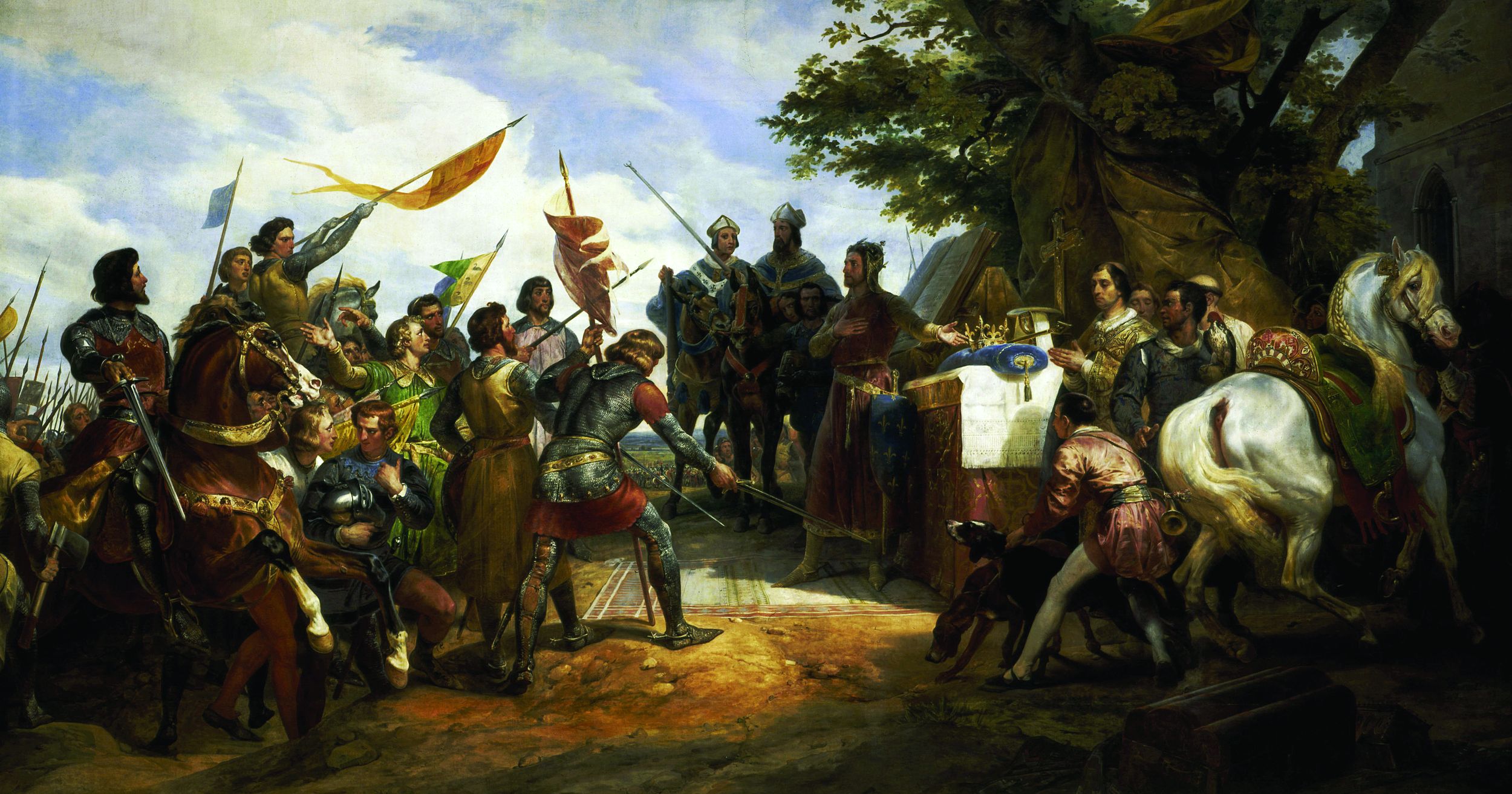
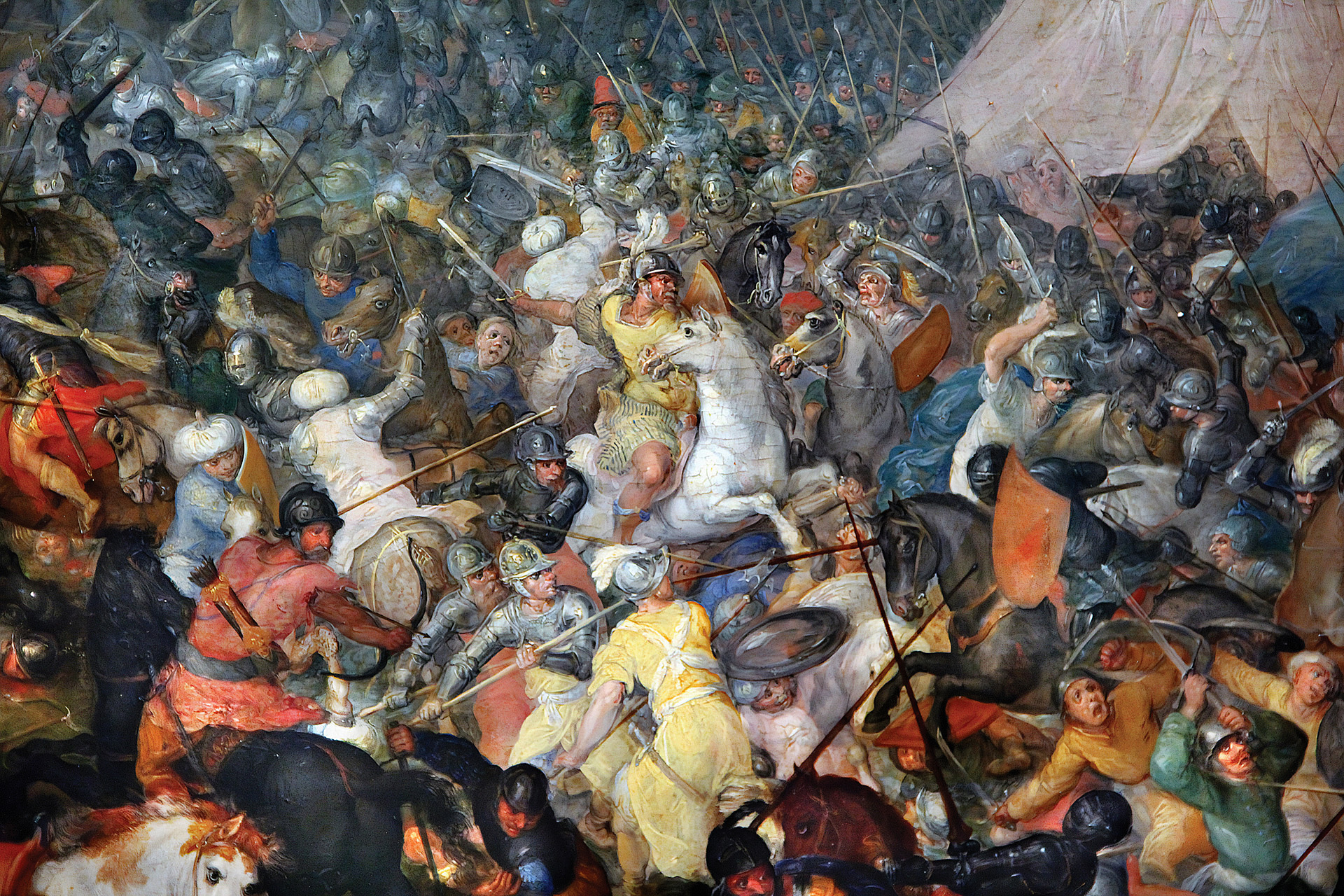
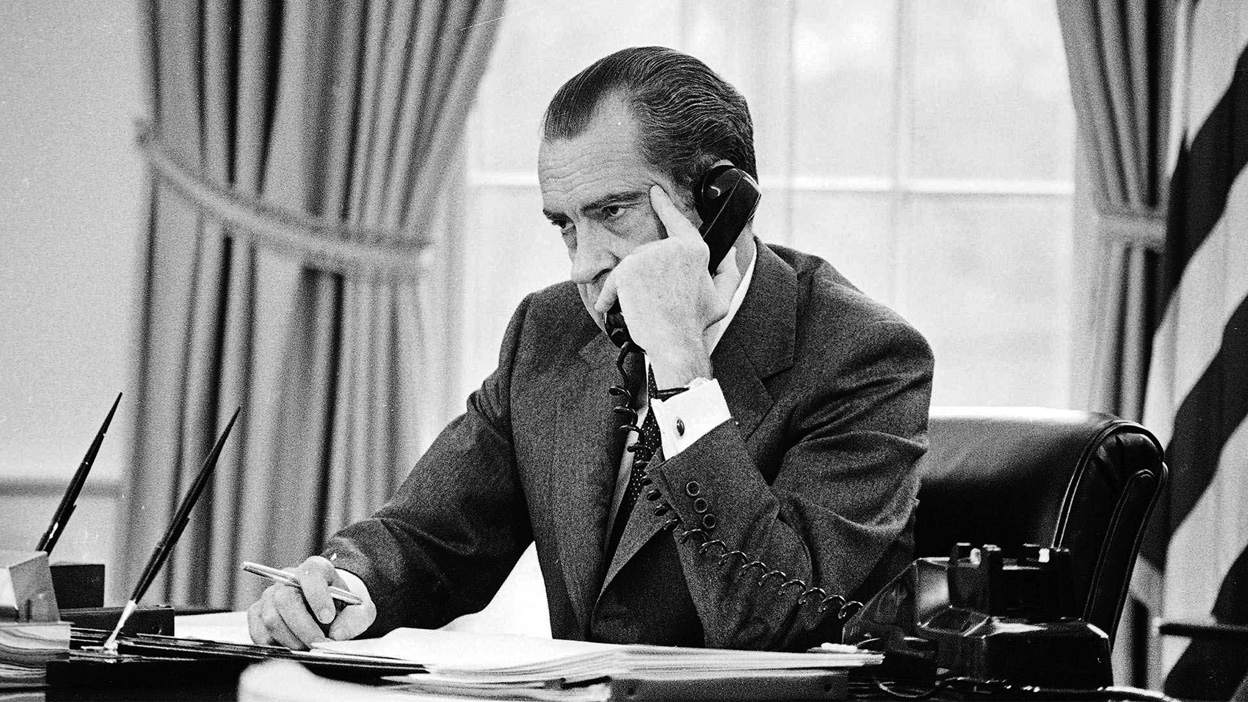
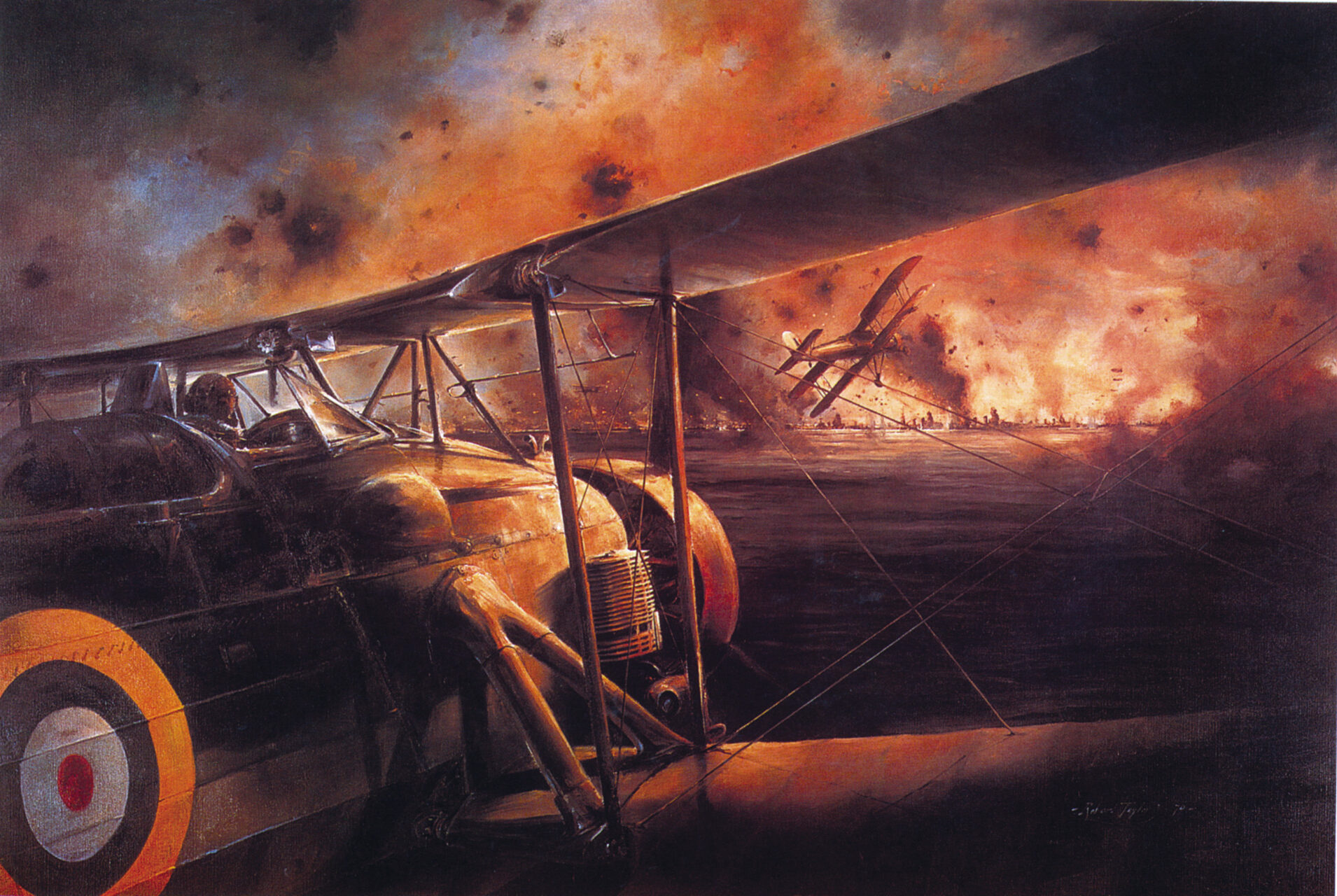
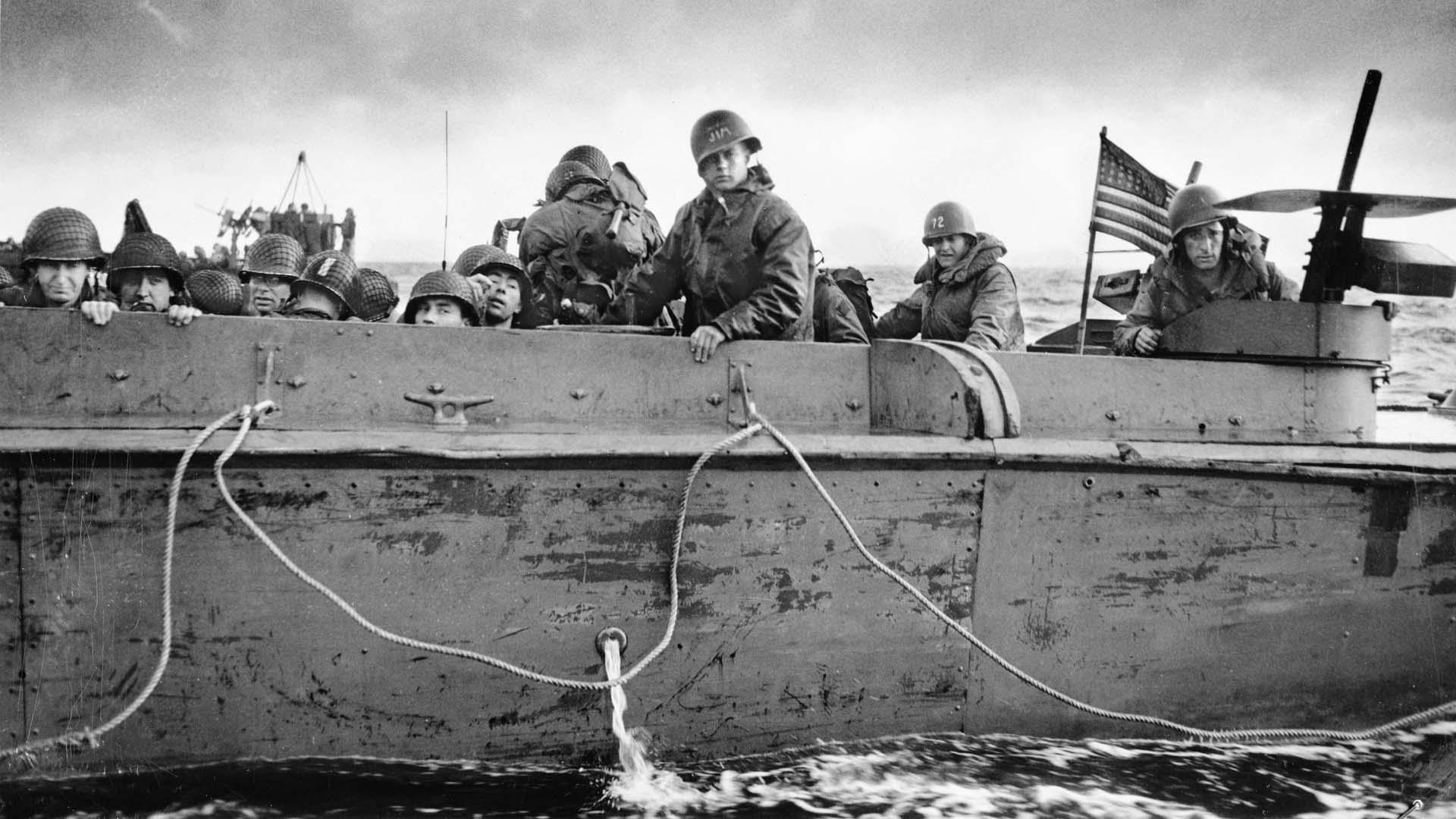
Join The Conversation
Comments
View All Comments